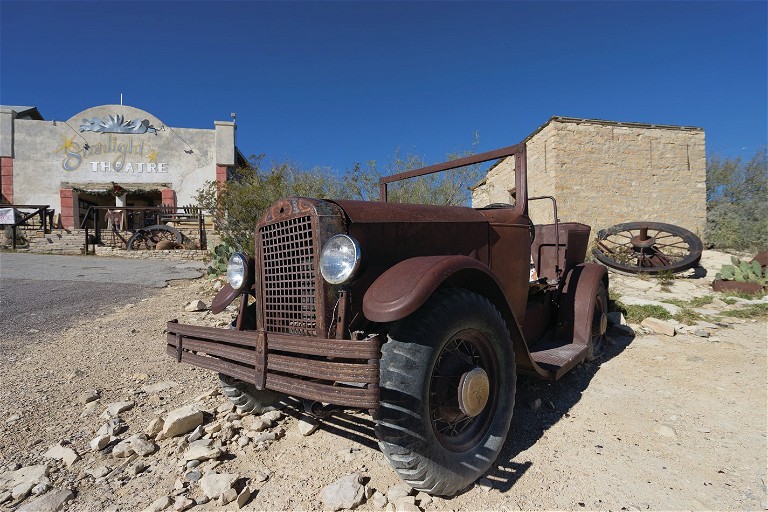HOME NO THE ROAD
BY JORDAN RANE
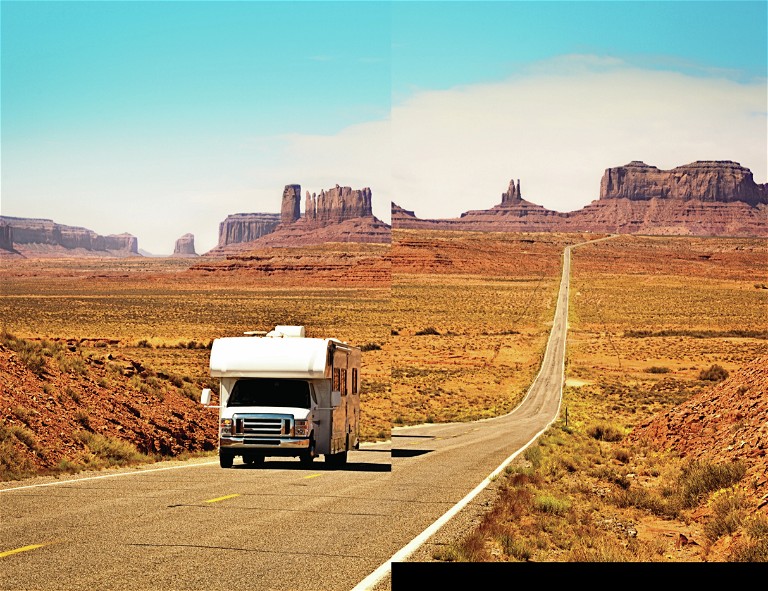
What makes a great American road trip? There are just three basic, agonizingly subjective factors.
First, you must pick the perfect road — or roads. Whether it’s Route 66, Highway 61, Natchez Trace Parkway or your favorite interstate, there are no shortage of long and winding options crisscrossing every facet of the country — full of pull-over attractions, novel experiences and lifeaffirming scenery en route.
Next, there’s the right mode of conveyance. This year, according to recently soaring numbers, that would be an RV. According to Roadshow by CNET, motorhome rental increases have spiked as high as 650% in 2020 due to a sustained thirst for healthy domestic adventure in the age of social distancing.
Finally, there’s the passengers. If you’re going to be sharing this mobile residence with close company for hundreds (perhaps thousands) of fun-filled miles, you’ll want to be clear about the right folks to share the road trip.
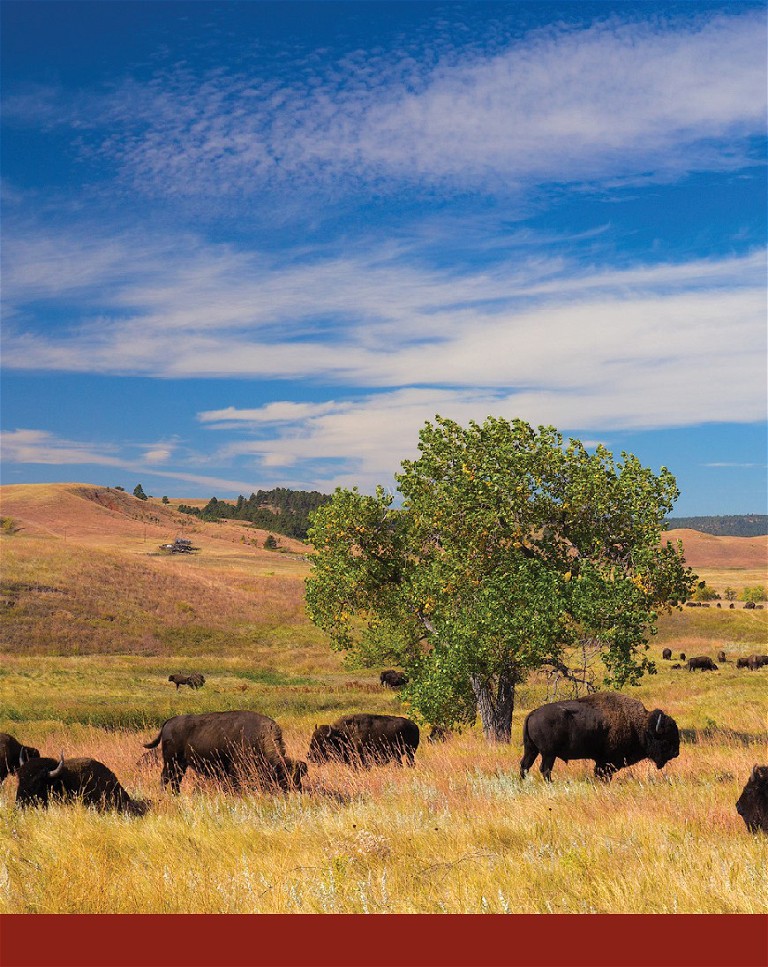
As for the road and the ride, here are three iconic behind-the-wheel destinations plus an RV primer to inspire a transporting experience on your next rolling odyssey.
COASTING ALONG THE PACIFIC
Defined broadly, the Pacific Coast Highway is a border-to-border, 1,650-mile bucket lister comprising stretches of U.S. Route 101, California State Route 1 and Interstate 5 from the top of Washington to the bottom of California with front row seaside views a good chunk of the way. Rolling past temperate rainforests of Washington’s Olympic Peninsula, giant desert dunes and sea stacks of Oregon, giant redwoods of Northern California and SoCal’s Riviera, with several world-class cities in between, a Pacific Coast run is really several unforgettable road trips built into one.
Somewhere in the middle of it all (if we had to direct you to a single area) is Big Sur. Serpentining for about 90 spectacular miles between San Simeon (Hearst Castle) and Carmel, California’s central coast showpiece is guaranteed to summon waves of joy, awe and palm-sweat all while sitting behind the wheel.
Exploring this American National Scenic Byway in an RV gives you license to rise above the usual Big Sur dash, experience central California’s spectacular edge at your own pace — and make good use of several motorhomefriendly campgrounds hiding along the Big Sur coast without having to pitch a tent or shell out for a pricey hotel.
Explore Sand Dollar Beach. Take a hike into the hills of the neighboring Ventana Wilderness. Lounge on the ocean-facing terrace of Big Sur village’s storied cliffside restaurant, Nepenthe, with an Ambrosiaburger and sweeping coastal panoramas. Then pull into Pfeiffer Big Sur State Park and you’re home for the night in a grove of towering redwood trees and California Scrub-Jay alarm clocks.
PARK-HOPPING IN THE DAKOTAS
On a meditative roll through the heartland, South Dakota’s rambunctiously designed southwest corner is an obvious road trip magnet. Rugged, removed and rife with history and legend, the hauntingly beautiful back highways of the Black Hills aren’t just built for Harleys and zippy compacts. Meandering through the land of Custer and “Wild Bill” Hickok in a sturdy RV gives you license to cruise Highway 385 and fabled Iron Mountain Road (aboard compatible smaller models only, if you dare) with its tight pigtail bridges, narrow tunnels and innumerable switchbacks at your own courageous, leisurely pace.
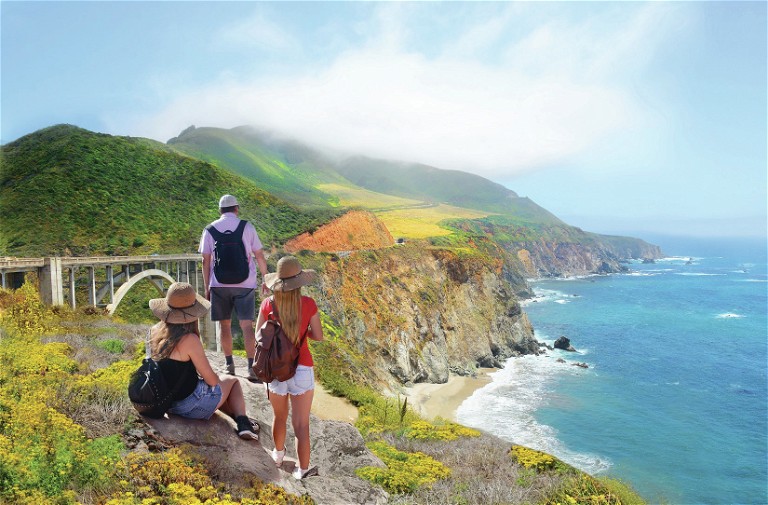
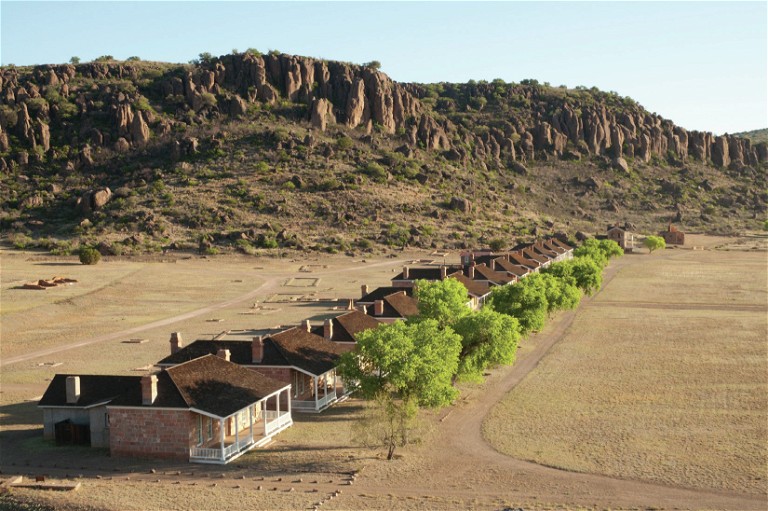
Deadwood. Mount Rushmore. Wind Cave National Park. Crazy Horse Memorial. They’re all in the neighborhood. Along with Custer State Park and its aptly named Wildlife Loop Road where the deer, bighorn sheep and buffalo herds are waiting for their close-ups.
About 100 miles east along I-90 (after a mandatory stop in the small town of Wall, dominated by the must-see retail emporium, Wall Drug) is Badlands National Park — where most of the park’s million annual visitors barely spend enough time to glimpse this place’s wild earthen architecture from behind a windshield. That’s good news for unhurried RVers spending a night or three at Cedar Pass Campground to experience sunrise and sunset in one of the continent’s most haunting geological imprints.
American Airlines Federal Credit Union
In addition to great financing on new and used cars and trucks, the Credit Union offers attractive rates on a variety of recreational vehicles. To find out more, visit AACreditUnion .org/auto
Ready to raise the solitude and odometer a notch? A mere 300 miles up the road along Interstate 85 is North Dakota’s hidden jewel, Theodore Roosevelt National Park, an even further off-the-radar badlands preserve.
MARVELING AT MOUNTAINS IN WEST TEXAS
Yes, there are mountains in the Lone Star State. Sufficiently big ones, and you’ll have to drive big distances to see them. The payoffs are some of the most secluded and starkly beautiful hills anywhere.
Starting from the upper left corner in El Paso, the “Top of Texas” is less than two hours east in Guadalupe Mountains National Park home to the state’s highest point, 8,749-foot Guadalupe Peak. Amazingly, this lofty expanse of ancient wilderness — geomorphologists call it “an Island in the Desert” — isn’t the most off-the-beaten-path park in the West. That distinction goes to its distant neighbor Big Bend, hiding about 200 miles south, but let’s not get ahead of ourselves.
WHICH RV WILL IT BE?
RVs run the gamut from bus-sized crowd pleasers to ingeniously compact living spaces on wheels. Which roving residence has your name on it? Here are the three main motorhome classes and some towable options to get you up to speed.
CLASS A: Thinking big? Here’s your RV. These are the behemoths built for comfort and classic comedies like Meet the Fockers, We’re the Millers, and your very own fearless family road epic. Ranging from 20 to 45 feet in length (or more), Class A’s can fit up to 10 passengers and generally come with all the luxury amenities one is expecting for the price. On the compromising side, fuel cost is high, agility is low and some states may require special driving permits.
CLASS B: Why is the smallest-sized RV class oddly plunked in the center alphabetical slot beside its heftier Class A and C brethren?
We’re guessing because this compact camper van-style motorhome—which can typically haul six and sleep four passengers — is designed for those in-between spaces (and more snugfitting campsites) where larger lettered motorhomes dare not tread. Bare necessities include bed, sink, toilet and limited storage space.
CLASS C: Here’s the comfy hybrid-ish middleground between Class A and B that spares you feeling like you’re in a party bus or a phone booth. Built from a standard truck chassis (i.e. not too intimidating to drive or park), Class C campers provide decent space and comfort for up to seven road-trippers.
TOWABLES: Hitching a homey tow-behind rig to an able vehicle can be a cheaper, more flexible option on the road that lets you disengage the R from the V at will. Sizes and styles vary from chic, teensy “teardrop” trailers that a sedan can handle to standard-sized travel trailers, pop-up campers and burly “Fifth Wheels” customized for attachment to a large pickup bed.
